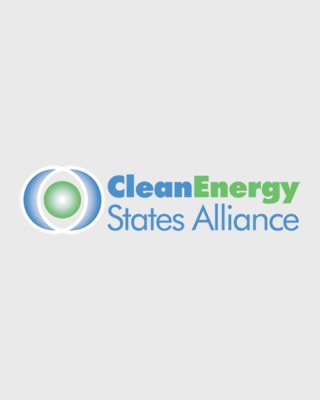The CESA SLICE Awards: Recognizing State Leadership in Clean Energy Development
Working closely with a variety of state, federal, and private stakeholders puts Clean Energy States Alliance (CESA) in a unique position to learn about numerous creative renewable energy and energy efficiency programs. State officials and agencies are increasingly partnering with the private sector, municipalities, and educational institutions to develop new approaches to recurring issues. The seven programs chosen to receive this year’s State Leadership in Clean Energy (SLICE) Awards have developed innovative grid integration solutions, promoted the smart implementation of solar and wind energy technologies, helped grow small cleantech businesses, and created new markets for biomass heating. These programs demonstrate exemplary leadership and innovation in clean energy development.
The California Energy Commission (CEC) and its Public Interest Energy Research (PIER) program received two awards, addressing pervasive grid integration issues by developing a robust microgrid and deploying a Real Time Dynamics Monitoring System. The microgrid, based at the University of California, San Diego (UCSD), integrates a wide range of renewable and distributed energy systems including a fuel cell, several photovoltaic systems, electric vehicles and electric vehicle batteries, a combined heat and power plant, and a thermal storage system. The relative power outputs of the various energy sources can be re-optimized hourly, preserving system stability despite natural fluctuations in renewable energy sources.
The CEC’s Real Time Dynamics Monitoring System, a product of its Synchrophasor Research and Development Program, enables system operators to receive better, more complete, and instantaneous information about grid operations. Better knowledge and more control mean fewer outages, improved grid reliability, and an increased ability to incorporate intermittent renewables. The CEC’s program has been replicated by the U.S. Department of Energy’s national synchrophasor program.
The CT Solar Lease Program, administered by Connecticut’s Clean Energy Finance and Development Authority, received a SLICE award for its trailblazing efforts in financing. The first residential solar lease program to involve a public-private partnership, CEFIA’s program pioneered the concept of solar leasing and brought private sector investors on board. The Connecticut solar lease model has been widely replicated, with the result that PV systems are now available across the country to homeowners who would not otherwise be able to afford them. Furthermore, data gathered by this program will inform other states and financial institutions, aiding the design of future renewable energy leasing programs. CEFIA is now in the process of designing a follow-up program that will offer leasing options for solar thermal as well as PV installations.
The Massachusetts Clean Energy Center’s Commonwealth Solar Hot Water Pilot Program achieved more than just putting solar thermal collectors on roofs: it also monitored the performance of solar thermal technologies. Feasibility studies for commercial-scale projects helped to standardize site assessments and build installer expertise, while installed commercial and residential projects sent performance-monitoring data back to MassCEC. This information is important for the development of performance-based incentives, and will help to educate stakeholders about the real benefits of well-sited solar thermal systems. Insights from the pilot program have already informed the design of a full-scale program, launched by MassCEC in July 2012.
The New York State Energy Research and Development Authority (NYSERDA) won two awards, for its small wind turbine and clean energy business incubator programs. NYSERDA’s On-Site Wind Market Development Program was the first to base incentives for behind-the-meter wind turbines on predicted performance rather than installed capacity. To aid in predicting turbine performance, NYSERDA partnered with several private companies to develop wind resource assessment tools. NYSERDA also requires that qualified systems be installed by certified installers; to support this requirement, NYSERDA has invested in developing policies and procedures to qualify turbines, supported the development of turbine testing labs, and partnered with community colleges to develop installer training programs. Through this multifaceted approach, NYSERDA has pushed the small turbine industry toward maturity, while helping to build a green workforce. NYSERDA’s other winning program, the Clean Energy Business Incubator Program, provides funds to six incubators that offer technical and business services designed to support startups in securing additional investment and commercializing new technologies. The program is results-oriented, granting funds only when mentored businesses achieve milestones, and is innovative in supporting and retaining clean energy businesses in New York State.
The New Hampshire Public Utilities Commission (PUC) succeeded in overcoming the all-too-common chicken/egg barrier with its whole-house Residential Wood-Pellet Boiler Rebate Program. To do this, New Hampshire involved wood pellet suppliers in early planning for this program, securing their participation by requiring that all customers install three-ton bulk delivery bins. With suppliers thus assured of profitable deliveries, the PUC was able to assure customers that fuel needs would be met at any location in the state. The program validated wood pellets as a primary heating fuel for consumers, replaced fuel oil heating systems with a cleaner, renewable alternative, and grew supply chains, creating new business opportunities in the state.
Together, these seven SLICE Award-winning programs reflect an impressively diverse array of innovative approaches to clean energy development. Each contributes valuable insights to the development of new programs and incentives. With continuing innovation, collaboration, and information sharing, state efforts such as these can truly pave the way for a clean energy future.
To learn more about the 2012 State Leadership in Clean Energy Awards, click here.
Published On
October 29, 2012

